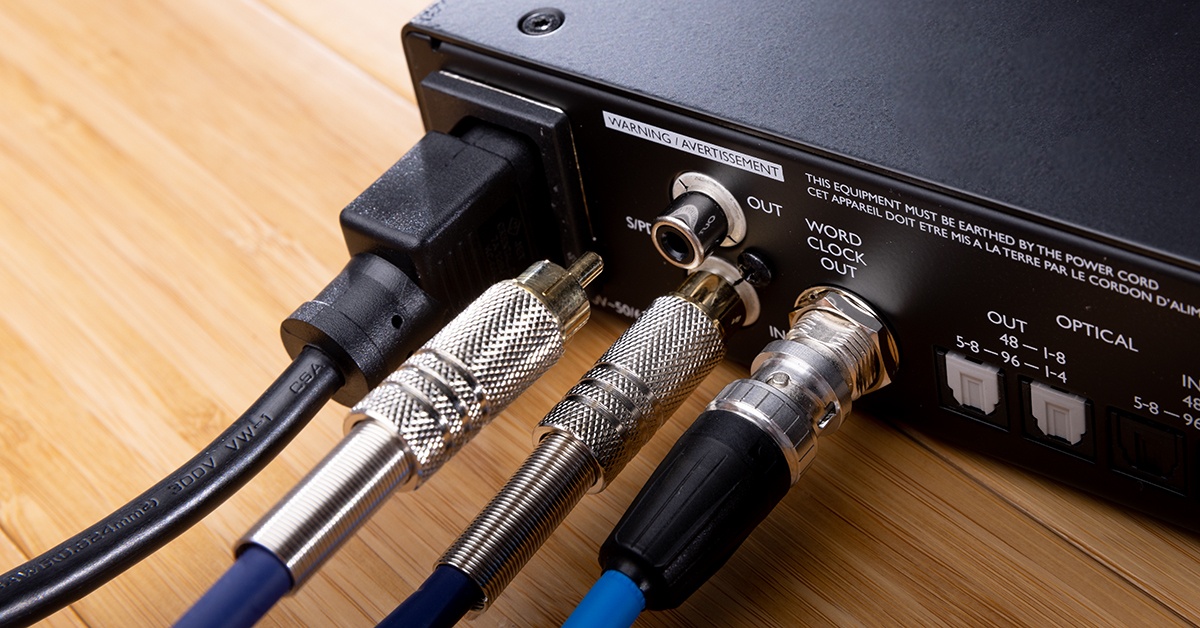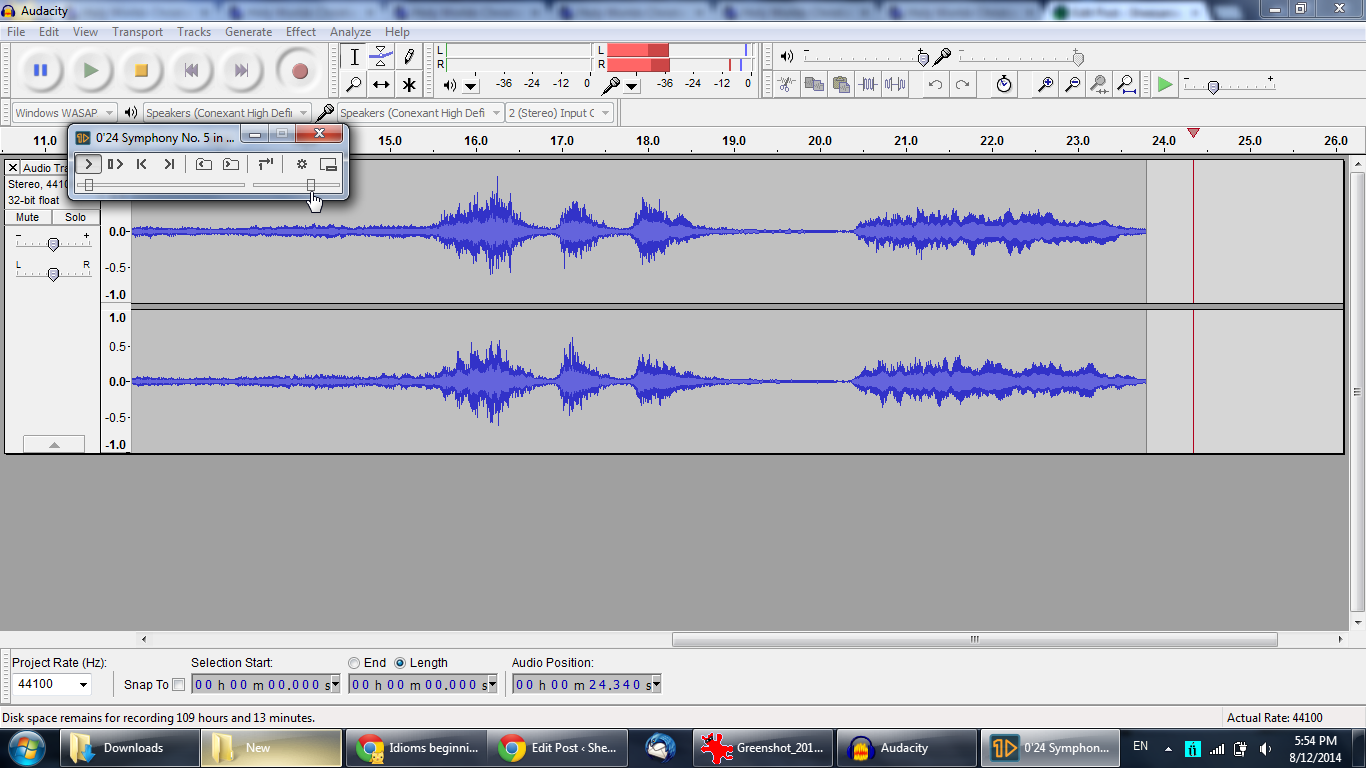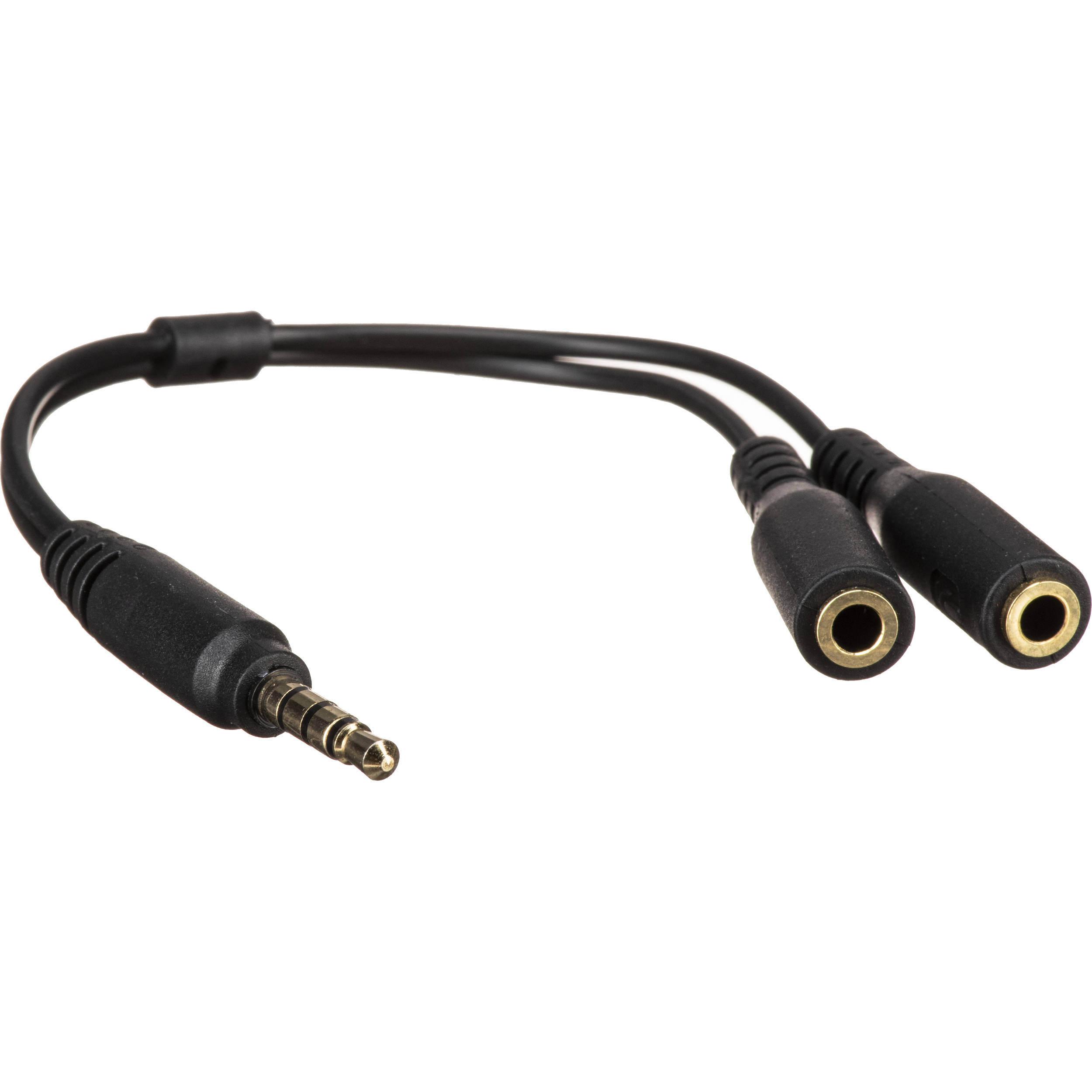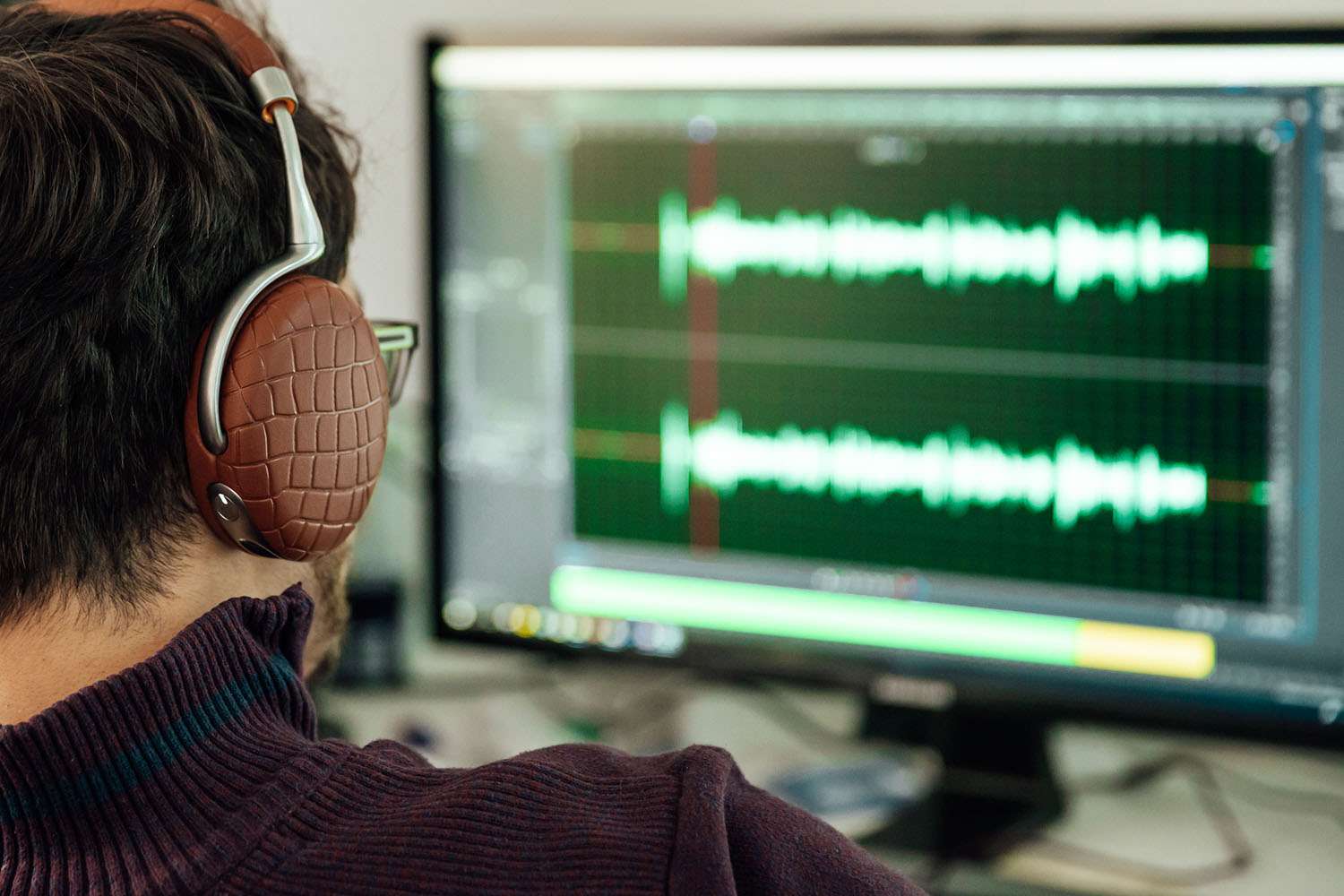Home>Production & Technology>Audio Cable>How To Configure Virtual Audio Cable With Sdr


Audio Cable
How To Configure Virtual Audio Cable With Sdr
Modified: January 22, 2024
Learn how to configure Virtual Audio Cable with Sdr and enhance your audio experience. Get step-by-step instructions for setting up Audio Cable now.
(Many of the links in this article redirect to a specific reviewed product. Your purchase of these products through affiliate links helps to generate commission for AudioLover.com, at no extra cost. Learn more)
Table of Contents
- Introduction
- What is Virtual Audio Cable?
- What is SDR (Software Defined Radio)?
- Why do you need to configure Virtual Audio Cable with SDR?
- Step 1: Download and Install Virtual Audio Cable
- Step 2: Install and Set Up SDR Software
- Step 3: Configuring Virtual Audio Cable with SDR
- Step 4: Testing the Setup
- Conclusion
Introduction
Welcome to the world of audio cables, where the quality of your sound can make or break your listening experience. Whether you are an audiophile, a musician, or just someone who appreciates high-quality audio, having the right audio cables is essential. In this article, we will explore the world of audio cables, specifically focusing on the versatile and powerful Virtual Audio Cable.
In today’s digital age, we have seen a significant shift towards multimedia consumption and production. We are no longer limited to physical connections and traditional audio cables. Instead, we have virtual solutions that offer flexibility, versatility, and convenience. One such solution is Virtual Audio Cable (VAC).
So what exactly is Virtual Audio Cable? In simple terms, VAC is a software application that allows you to connect multiple audio applications and devices together virtually. It creates a virtual audio cable or channel that transfers audio data from one application or device to another, essentially emulating the functions of physical audio cables.
With Virtual Audio Cable, you can route audio signals between different software applications, record computer audio, play audio through multiple outputs simultaneously, and much more. It opens up a world of possibilities for audio enthusiasts, musicians, sound engineers, and anyone else who relies on audio in their work or leisure.
To further enhance your audio experience, we will also explore how to configure Virtual Audio Cable with Software Defined Radio (SDR). SDR is a fascinating technology that uses software and digital signal processing (DSP) to process and manipulate radio signals. It allows you to listen to, decode, and analyze various radio signals, from FM radio stations to ham radio transmissions. By combining Virtual Audio Cable with SDR, you can create a powerful and versatile audio system for radio monitoring, amateur radio, and other applications.
In the following sections, we will guide you through the process of setting up Virtual Audio Cable with SDR. We will cover the necessary steps and configurations to ensure a seamless and optimized audio experience. So, let’s dive in and harness the power of Virtual Audio Cable and Software Defined Radio!
What is Virtual Audio Cable?
Virtual Audio Cable, also known as VAC, is a software application that allows you to create virtual audio cables or channels on your computer. These virtual audio cables simulate the functions of physical audio cables, enabling you to route audio signals between different applications and devices.
With Virtual Audio Cable, you can connect multiple audio sources, such as media players, audio editors, and virtual instruments, to audio destinations like speakers, headphones, and sound cards. It acts as a bridge between audio applications, allowing them to communicate and exchange audio data seamlessly.
One of the key advantages of Virtual Audio Cable is its flexibility and versatility. It provides a wide range of configuration options, allowing you to customize the routing and mixing of audio signals according to your specific needs. Whether you want to record audio from multiple sources simultaneously, apply real-time effects and processing to audio streams, or create virtual audio devices for specialized applications, Virtual Audio Cable has you covered.
In addition to its versatility, Virtual Audio Cable offers high-quality audio transfer with low latency. It uses a sophisticated driver architecture to ensure accurate and efficient audio transmission, minimizing delays and preserving the integrity of the audio signals. This is particularly important for real-time applications like gaming, live streaming, and music production, where any delay or distortion can negatively impact the user experience.
Virtual Audio Cable is compatible with various audio APIs (Application Programming Interfaces), such as DirectSound, MME (Multimedia Extension), KS (Kernel Streaming), WASAPI (Windows Audio Session API), and ASIO (Audio Stream Input/Output). This ensures a wide range of compatibility with different audio software and devices, allowing you to integrate Virtual Audio Cable seamlessly into your existing audio setup.
Overall, Virtual Audio Cable provides a powerful and flexible solution for managing audio signals on your computer. Whether you are a professional audio engineer, a content creator, or simply an enthusiast who wants to enhance their audio experience, Virtual Audio Cable offers the tools and capabilities to take your sound to the next level.
What is SDR (Software Defined Radio)?
Software Defined Radio, or SDR, is a revolutionary technology that enables the reception and processing of radio signals using software and digital signal processing (DSP) techniques. Unlike traditional radio systems that rely on hardware components for signal reception and demodulation, SDR shifts these functions to software applications running on a computer.
At its core, SDR consists of two main components: the RF front-end and the digital processing software. The RF front-end handles the initial reception and amplification of radio signals, while the digital processing software performs tasks like filtering, demodulation, and decoding.
One of the main advantages of SDR is its flexibility and adaptability. Since the radio signal processing is done in software, the functionality and capabilities of an SDR system can be easily modified and upgraded through software updates. This allows for the reception of a wide range of radio frequencies and modulation schemes, making SDR a versatile solution for various applications.
SDR finds applications in various fields, including telecommunications, amateur radio, aviation, military, and research. It allows radio enthusiasts and professionals to explore and experiment with different radio frequencies, decode digital signals, analyze radio protocols, and more.
One of the key benefits of SDR is its ability to provide a wide bandwidth for signal reception. Traditional hardware-based radios have limited bandwidth capabilities due to the physical limitations of their components. With SDR, the bandwidth is determined by the processing power of the computer, allowing for the reception of a broader range of frequencies simultaneously.
Furthermore, SDR opens up opportunities for advanced signal processing techniques. By leveraging the power of digital signal processing algorithms, SDR systems can enhance the quality of received signals, suppress interference, and perform advanced demodulation and decoding tasks. This makes SDR particularly useful in scenarios where signal conditions are challenging or where specific signal processing requirements exist.
Whether you are interested in exploring the world of radio communication, experimenting with different waveforms, or analyzing and decoding digital signals, SDR provides an exciting and powerful toolset. By combining the capabilities of Software Defined Radio with the flexibility of Virtual Audio Cable, you can create a versatile and high-performance audio system for radio monitoring, transmission, and reception.
Why do you need to configure Virtual Audio Cable with SDR?
Configuring Virtual Audio Cable with Software Defined Radio (SDR) opens up a world of possibilities for radio enthusiasts, amateur radio operators, and anyone interested in exploring the realm of wireless communication. By combining these two powerful tools, you can create a seamless audio system that allows you to monitor, decode, and analyze radio signals with precision and flexibility.
Here are a few reasons why you need to configure Virtual Audio Cable with SDR:
- Audio Routing: Virtual Audio Cable acts as a virtual audio cable, allowing you to route audio signals between different software applications and hardware devices on your computer. By configuring Virtual Audio Cable with SDR software, you can route the audio output from the SDR receiver to other applications such as audio editors, decoders, or even virtual instruments. This enables you to process and analyze radio signals in real-time, enhancing your overall radio monitoring experience.
- Multi-channel Recording: Virtual Audio Cable with SDR enables you to record audio from multiple sources simultaneously. This is particularly useful for monitoring multiple radio frequencies or capturing different radio signals simultaneously. By configuring Virtual Audio Cable to create virtual audio cables, you can direct the audio output from different SDR receivers to separate audio recording software, allowing you to capture and analyze multiple channels of audio data simultaneously.
- Real-time Audio Processing: Virtual Audio Cable allows you to apply real-time audio effects and processing to the audio streams coming from the SDR receiver. You can use audio processing software or plugins to enhance the clarity and quality of the received audio signals, remove noise or interference, or apply various audio effects for a more enjoyable listening experience. Configuring Virtual Audio Cable with SDR enables you to leverage the power of audio processing tools and enhance the audio output of your SDR system.
- Integration with Existing Audio Setup: By configuring Virtual Audio Cable with SDR, you can seamlessly integrate your SDR system into your existing audio setup. Whether you have a dedicated audio interface, external speakers, or headphones, Virtual Audio Cable allows you to route the audio output from the SDR receiver to any desired audio destination. This ensures that you can listen to the radio signals through your preferred audio devices, making the whole experience more immersive and enjoyable.
- Flexibility and Customization: Configuring Virtual Audio Cable with SDR gives you the flexibility to customize your audio routing and system configuration according to your specific needs. You can create virtual audio cables, set up different audio sources and destinations, and fine-tune the audio settings to optimize your SDR experience. This level of customization allows you to tailor your audio system to your preferences and workflow, giving you full control over your radio monitoring and analysis tasks.
Configuring Virtual Audio Cable with SDR opens up a world of possibilities for audio routing, multi-channel recording, real-time processing, integration with existing audio setups, and customized workflows. By harnessing the power of these two tools, you can take your radio monitoring and analysis capabilities to new heights.
Step 1: Download and Install Virtual Audio Cable
The first step in configuring Virtual Audio Cable with Software Defined Radio (SDR) is to download and install the Virtual Audio Cable software onto your computer. Here are the steps to get started:
- Research and Choose a Reliable Source: Start by researching and identifying a reliable source for downloading the Virtual Audio Cable software. Visit the official website or trusted software repositories to ensure that you acquire a legitimate copy of the software without any malware or viruses.
- Download the Software: Once you have chosen a reliable source, navigate to the download page and click on the appropriate download link for your operating system (Windows). Virtual Audio Cable is compatible with various versions of Windows, so make sure to choose the one that matches your system requirements.
- Installation Process: After the download is complete, locate the downloaded file and initiate the installation process. Follow the on-screen instructions to proceed with the installation. Make sure to read and understand any license agreements or terms of use before proceeding.
- Choose Installation Options: During the installation process, you will be presented with various options. It is recommended to choose the default settings unless you have specific requirements or preferences. The default settings should be sufficient for most users.
- Complete the Installation: Once you have chosen the installation options, proceed with the installation process. The installer will copy the necessary files and configure Virtual Audio Cable on your system. This may take a few minutes, so be patient and wait for the installation to complete.
- Verify the Installation: After the installation is complete, you can verify that Virtual Audio Cable is successfully installed on your system. Look for the Virtual Audio Cable application or its icon in your Programs or Applications folder. You can also check the system tray of your computer for the Virtual Audio Cable icon.
That’s it! You have successfully downloaded and installed Virtual Audio Cable on your computer. The next step is to install and set up the SDR software, which we will cover in the next section. Make sure to keep the Virtual Audio Cable software up to date by checking for any available updates from the official website or the software’s automatic update feature. This will ensure that you have the latest features and bug fixes for a smooth and optimized SDR experience.
Step 2: Install and Set Up SDR Software
After successfully installing Virtual Audio Cable, the next step in configuring Virtual Audio Cable with Software Defined Radio (SDR) is to install and set up the SDR software. Here are the steps to get started:
- Research and Choose SDR Software: Start by researching and identifying the SDR software that suits your needs. There are various SDR software options available, such as SDR#, HDSDR, SDRadio, and many more. Consider factors like features, compatibility, user interface, and community support before making your choice.
- Download the SDR Software: Once you have chosen the SDR software, visit the official website or trusted software repositories to download the software. Make sure to select the version that is compatible with your operating system (Windows).
- Install the SDR Software: Locate the downloaded SDR software file and initiate the installation process by double-clicking on it. Follow the on-screen instructions to proceed with the installation. If there are any specific installation options or settings, choose the recommended or default options unless you have specific requirements.
- Connect the SDR Hardware: If you are using an external SDR receiver, such as an RTL-SDR or HackRF, connect it to your computer using the appropriate USB cable. Make sure that the SDR hardware is properly connected and recognized by your operating system before proceeding.
- Launch the SDR Software: Once the installation is complete, locate the installed SDR software on your computer and launch it. Depending on the software, you may find a desktop shortcut or an entry in the Programs or Applications folder. Double-click on the icon to open the software.
- Configure the SDR Software: Inside the SDR software, you will find various configuration options. These may include selecting the SDR hardware, adjusting sample rate and bandwidth, configuring input sources, and enabling the Virtual Audio Cable output. Consult the documentation or user guide of the specific software to properly configure the settings for your desired setup.
- Adjust Frequency and Gain: To start receiving and decoding radio signals, you will need to adjust the frequency and gain settings within the SDR software. Consult the software’s user interface or documentation for instructions on how to tune in to specific frequencies and optimize the gain for optimal signal reception.
That’s it! You have successfully installed and set up the SDR software. The next step is to configure Virtual Audio Cable with the SDR software, which we will cover in the next section. Keep in mind that different SDR software may have slightly different configuration steps and interfaces, so refer to the user guide or documentation for specific instructions related to your chosen software.
Step 3: Configuring Virtual Audio Cable with SDR
Now that you have installed and set up both Virtual Audio Cable and your preferred Software Defined Radio (SDR) software, it’s time to configure Virtual Audio Cable to work seamlessly with the SDR software. The configuration process will involve creating virtual audio cables, setting up the audio routing, and ensuring a smooth data transfer between the SDR software and other audio applications. Here are the steps to configure Virtual Audio Cable with SDR:
- Launch Virtual Audio Cable: Start by launching the Virtual Audio Cable software. You should be able to find the application in your Programs or Applications folder, or by searching for it in the Start menu or Launchpad.
- Create Virtual Audio Cables: In the Virtual Audio Cable interface, you will find options to create virtual audio cables. The exact process may vary depending on the version of Virtual Audio Cable you are using, but typically, you can create virtual audio cables by selecting the number of cables and assigning them specific input and output channels.
- Configure Output in SDR Software: Open your chosen SDR software and navigate to the settings or options menu. Look for the audio output section and select the Virtual Audio Cable as the output device. This will ensure that the audio signals received by the SDR software are routed through the Virtual Audio Cable.
- Configure Input in Other Audio Applications: If you want to process or analyze the audio output from the SDR software in other audio applications, you need to configure those applications to recognize the Virtual Audio Cable as an input device. Open the audio settings in the respective applications and select the Virtual Audio Cable as an input device.
- Set Sample Rate and Buffer Size: Depending on your specific requirements and system capabilities, you may need to adjust the sample rate and buffer size settings in both the SDR software and Virtual Audio Cable. Consult the documentation or user guide for your SDR software to determine the optimal sample rate and buffer size settings for your setup.
- Test and Fine-Tune the Configuration: After configuring Virtual Audio Cable with your SDR software and other audio applications, it’s crucial to test the setup. Tune in to a desired radio frequency, listen for audio output from the SDR software, and verify if the audio is being routed correctly through the Virtual Audio Cable. Fine-tune the configuration as needed, ensuring proper audio routing and optimal performance.
By following these steps and properly configuring Virtual Audio Cable with your SDR software, you can create a seamless audio system that allows you to process, analyze, and enjoy radio signals with precision and flexibility. Remember to consult the documentation and user guides of your specific software for any additional configuration details or advanced settings specific to your setup.
Step 4: Testing the Setup
After configuring Virtual Audio Cable with your Software Defined Radio (SDR) software and other audio applications, it’s important to thoroughly test the setup to ensure that everything is working as expected. The testing process will involve verifying audio routing, checking for signal reception, and ensuring proper synchronization between the SDR software and other applications. Here are the steps to test your Virtual Audio Cable and SDR setup:
- Select a Radio Frequency: Open your SDR software and select a radio frequency that you want to monitor or decode. This could be FM stations, amateur radio bands, or any other frequency of interest. Make sure to choose a frequency that is within the capabilities of your SDR hardware and the supported frequency range of the software.
- Check Audio Output: Listen for audio output from the SDR software. If the virtual audio cables and routing are configured correctly, you should be able to hear the audio signals from the selected radio frequency through the output device connected to the Virtual Audio Cable.
- Verify Audio Routing: If you have other audio applications open that are configured to receive input from the Virtual Audio Cable, check if the audio signals from the SDR software are being routed to those applications as expected. Play audio in those applications to ensure you can hear the received radio signals through them.
- Adjust Settings: If you encounter any issues with the audio routing or signal reception, double-check the settings in both the SDR software and the other audio applications. Ensure that the input and output devices are configured correctly, the sample rate and buffer size are optimal, and the volume levels are appropriately adjusted.
- Test with Different Frequencies and Applications: Expand your testing by trying different radio frequencies and exploring various audio applications. Tune in to different stations, change modulation types, and experiment with receiving different types of signals, such as voice, data, or digital modes. Use audio analysis tools or decoders to further examine and understand the received signals.
- Synchronize Audio and Visuals: If you are using any visual spectrum analysis or waterfall displays in your SDR software or other applications, ensure that the audio and visuals are synchronized. This is important for accurate signal analysis and decoding. Adjust the settings within the applications to achieve proper synchronization if needed.
By conducting thorough testing, you can verify the functionality, performance, and reliability of your Virtual Audio Cable and SDR setup. Make note of any issues you encounter and troubleshoot them accordingly. Enjoy exploring and experimenting with the capabilities of your SDR system, whether it’s for radio monitoring, research, or amateur radio activities.
Conclusion
Congratulations! You have successfully configured Virtual Audio Cable with your Software Defined Radio (SDR) setup, enabling you to create a powerful and versatile audio system for radio monitoring, decoding, and analysis. By combining these two tools, you have unlocked a world of possibilities in the realm of wireless communication.
Virtual Audio Cable provides the flexibility and versatility to route audio signals between different software applications and hardware devices, while SDR technology allows you to receive, decode, and analyze radio signals using software and digital signal processing. Together, they offer a seamless and optimized audio experience for radio enthusiasts, amateur radio operators, researchers, and anyone interested in exploring the world of wireless communication.
Throughout the configuration process, you learned how to download and install Virtual Audio Cable, install and set up the SDR software, configure Virtual Audio Cable with SDR, and test the setup to ensure proper audio routing and signal reception. These steps have empowered you to create a customized audio system that suits your specific needs and preferences.
Now that your Virtual Audio Cable and SDR setup is up and running, it’s time to delve deeper into the world of radio monitoring, decoding, and analysis. Explore different frequencies, experiment with various modes, and use the tools and capabilities provided by your SDR software to gain insights and knowledge about the wireless signals that surround us.
Remember to stay updated with the latest versions of Virtual Audio Cable and your chosen SDR software, as new updates may bring additional features, bug fixes, and performance improvements. Additionally, continue to explore the vast community of SDR enthusiasts, where you can find resources, tips, and insights to enhance your SDR experience further.
Whether you are a radio hobbyist, a researcher, or someone passionate about understanding the intricacies of wireless communication, your Virtual Audio Cable and SDR setup will be a valuable tool in your journey. Enjoy the endless possibilities of exploring radio signals, decoding transmissions, and expanding your knowledge in this fascinating field.











